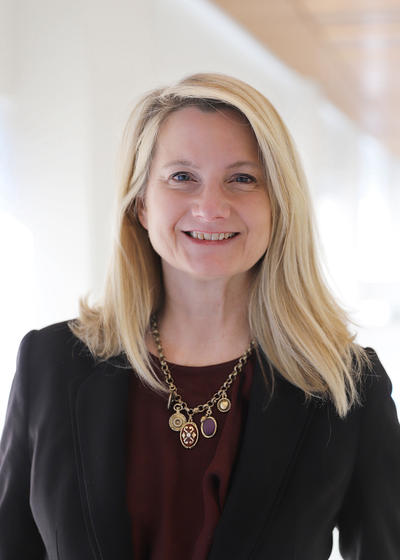In This Story
Burnout is an occupational phenomenon that results from chronic workplace stress, according to the World Health Organization.
Burnout often includes emotional exhaustion, negative feelings or mental distance from one’s job, and a low sense of accomplishment at work. COVID-19 increased feelings of burnout in primary care physicians, and a new study, sought to understand primary care clinicians’ perspectives on burnout during the COVID-19 pandemic, the causes of burnout, and strategies to improve clinician well-being.

Inefficiencies of electronic health records systems and high levels of documentation contribute to burnout, according to clinicians participating in a recent study led by Debora Goldberg, associate professor in George Mason University’s College of Public Health. Other contributors to burnout included high patient volume, staffing shortages, and expectations for responding to patient emails and telephone calls. Most participants also described the need to work after clinic hours to complete documentation.
“The results of this study provide an in-depth view of participating clinicians’ experiences and perceptions of burnout and other mental health challenges. These viewpoints can improve awareness of the issues and strategies to improve the health and well-being of our clinician workforce,” said Goldberg, the principal investigator.
Most of the suggested strategies to improve clinician well-being were changes at the organizational level and included increasing efforts to improve work-life balance, enhancing the use of team-based care models, optimizing electronic health record functions, providing accessible mental health services, granting additional administrative time to complete documentation, and increasing institutional awareness and recognition of the issues surrounding burnout.
Additionally, clinicians reported experiencing traumatic events during the pandemic and in some cases reported both burnout and depression. The study findings align with previous research that reported primary care physicians indicated dramatic increases in their workload since the beginning of the pandemic and an escalation in staffing issues, both contributing to an increase in burnout and stress among clinicians.
This research was funded by the Health Resources and Services Administration, Health and Public Safety Workforce Resiliency Training Program (1 U3NHP45404-01-00), and George Mason University College of Public Health Intramural Pilot Study Funding.
“Anxiety, COVID, Burnout and Now Depression”: a Qualitative Study of Primary Care Clinicians’ Perceptions of Burnout” was published in the Journal of General Internal Medicine in November 2023. Tulay Soylu from Temple University; Carolyn Faith Hoffman, a Mason doctoral student; and Rachel E. Kishton and Peter F. Cronholm from the University of Pennsylvania are co-authors.
